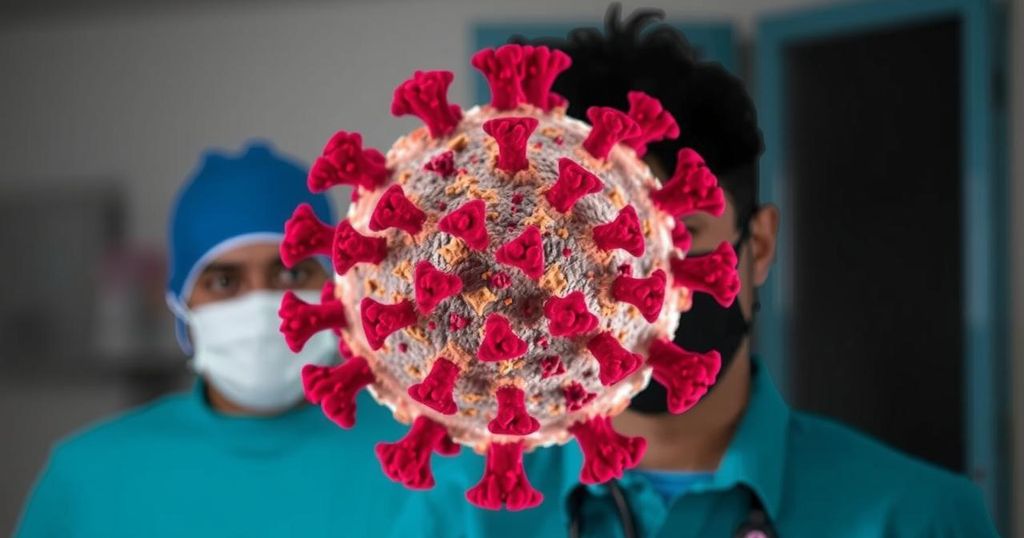Concerns Rise Over HMPV Spread from China to India Amid New Virus Outbreak
A new virus, human metapneumovirus (HMPV), is spreading in China, particularly among children, raising concerns about its potential spread to India. Experts assure that no HMPV cases have been reported in India, emphasizing the importance of hygiene practices to mitigate risks. HMPV symptoms are similar to the flu, and the Chinese government is enhancing monitoring efforts to prevent a recurrence of COVID-19-level preparedness issues.
In early 2025, the emergence of a new virus known as human metapneumovirus (HMPV) in China has prompted concerns about its potential spread to India. Reports indicate a rise in HMPV cases, particularly in children under 14 in northern provinces of China. However, as of now, no cases have been detected in India, according to Dr. Kuldeep Kumar Grover, Head of Critical Care and Pulmonology at CK Birla Hospital Gurugram, who reassures that there is no immediate cause for alarm.
Dr. Grover emphasized the importance of maintaining respiratory hygiene to mitigate risks associated with the transmission of respiratory viruses, especially in densely populated areas. He suggests practical measures such as thorough handwashing, increased mask usage in crowded settings, and avoiding close contact with individuals who may be ill.
The symptoms of HMPV resemble those of the common cold or flu, including mild fever, runny nose, and cough. The virus can be transmitted through close contact, such as handshakes, and from surfaces contaminated by an infected person. It is noteworthy that the Chinese government is implementing a monitoring system for pneumonia of unknown origin to enhance preparedness following previous challenges encountered during the COVID-19 pandemic.
Human metapneumovirus (HMPV) is a respiratory virus that has been increasingly reported in various regions, particularly in China, where it has surged amongst children. This discovery raised alarms about its possible implications for neighboring countries like India, especially given the shared vulnerabilities to respiratory infections. HMPV is spread through droplets from coughs and sneezes, and by contact with contaminated surfaces, which poses a significant risk in crowded populations. Experts are monitoring the situation closely, taking into account the lessons learned from the COVID-19 pandemic.
In conclusion, while the situation regarding HMPV in China raises valid concerns, experts indicate that no cases have yet been reported in India, and currently, there is no need to panic. Implementing precautionary measures can help reduce transmission risks. Continuing to monitor the situation is vital, especially as countries remain vigilant against potential outbreaks of respiratory viruses.
Original Source: www.livemint.com








Post Comment